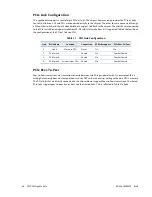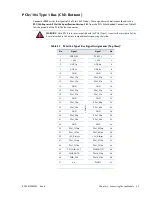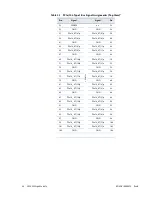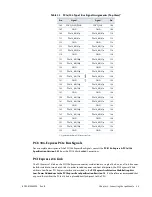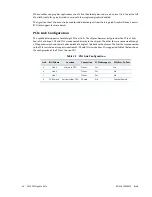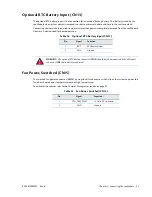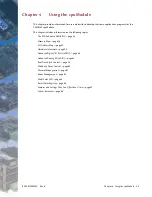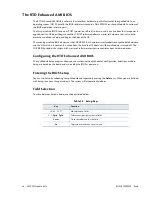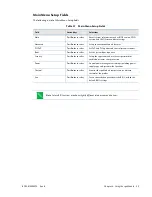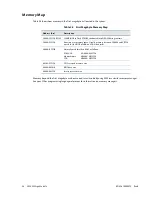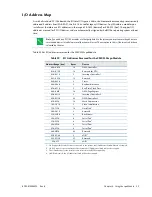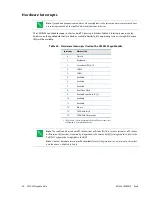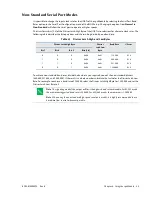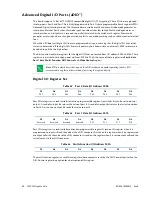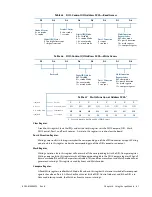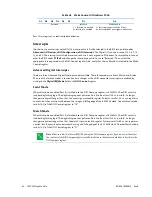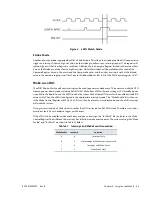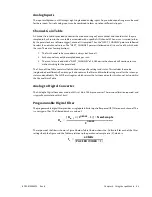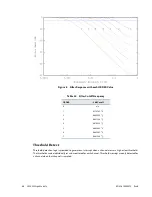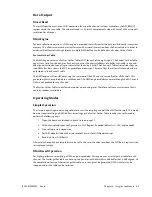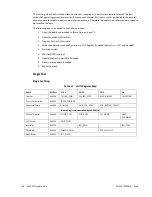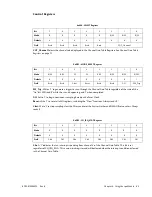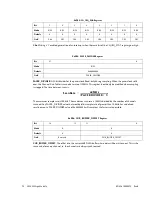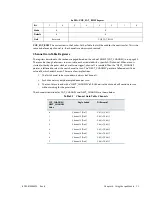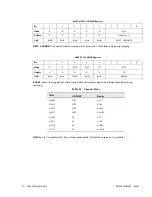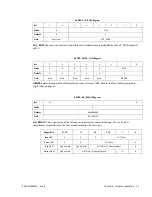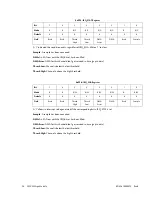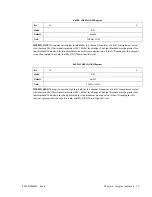
60
CMX32M cpuModule
BDM-610000075
Rev B
Advanced Digital I/O Ports (aDIO™)
This board supports 12 bits of TTL/CMOS compatible digital I/O (TTL signaling). These I/O lines are grouped
into two ports, Port 0 and Port 1. Port 0 is bit programmable; Port 1 is byte programmable. Port 0 supports RTD’s
Advanced Digital Interrupt modes. The three modes are strobe, match and event. Strobe mode generates an
interrupt and latches Port 0 when the strobe input transitions from low to high. Match mode generates an
interrupt when an 8-bit pattern is received in parallel that matches the match mask register. Event mode
generates an interrupt when a change occurs on any bit. In any mode, masking can be used to monitor selected
lines.
When the CPU boots, all digital I/O lines are programmed as inputs, meaning that the digital I/O line’s initial
state is undetermined. If the digital I/O lines must power up to a known state, an external 10 k
Ω
resistor must
be added to pull the line high or low.
The 8-bit control read/write registers for the digital I/O lines are located from I/O address 9C0h to 9C4h. These
registers are written to zero upon power up. From 9C0h to 9C4h, the name of these registers are
Port 0 data
,
Port 1 data
,
Multi-Function
,
DIO-Control
, and
Wake Control
register.
Digital I/O Register Set
Port 0 Data register is a read/write bit direction programmable register. A particular bit can be set to input or
output. A read of an input bit returns the value of port 0. A read of an output bit returns the last value written
to Port 0. A write to an output bit sends that value to port 0.
Port 1 Data register is a read/write byte direction programmable register. A read on this register when it is
programmed to input will read the value at the aDIO connector. A write on this register when it is programmed
as output will write the value to the aDIO connector. A read on this register when it is set to output will read the
last value sent to the aDIO connector.
The multi-function register is a read/write register whose contents are set by the DIO-Control register. See the
DIO-Control register description for a description of this register.
Note
RTD provides drivers that support the aDIO interface on popular operating systems. RTD
recommends using these drivers instead of accessing the registers directly.
Table 42
Port 0 Data I/O Address 9C0h
D7
D6
D5
D4
D3
D2
D1
D0
P0.7
P0.6
P0.5
P0.4
P0.3
P0.2
P0.1
P0.0
Table 43
Port 1 Data I/O Address 9C1h
D7
D6
D5
D4
D3
D2
D1
D0
Reserved
Reserved
Reserved
Reserved
P1.3
P1.2
P1.1
P1.0
Table 44
Multi-Function I/O Address 9C2h
D7
D6
D5
D4
D3
D2
D1
D0
Содержание BDM-610000075
Страница 3: ... Accessing the Analog World www rtd com ISO9001 and AS9100 Certified CMX32M cpuModules ...
Страница 4: ...iv CMX32M cpuModule BDM 610000075 Rev B ...
Страница 30: ...22 CMX32M cpuModule BDM 610000075 Rev B ...
Страница 60: ...52 CMX32M cpuModule BDM 610000075 Rev B ...
Страница 102: ...94 CMX32M cpuModule BDM 610000075 Rev B ...
Страница 116: ...108 CMX32M cpuModule BDM 610000075 Rev B ...
Страница 118: ...110 CMX32M cpuModule BDM 610000075 Rev B ...
Страница 120: ...112 CMX32M cpuModule BDM 610000075 Rev B ...

